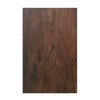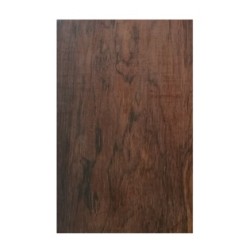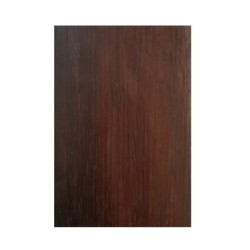Brazilian Rosewood

Family: Fabaceae - Order: Fabales -
Class: Magnoliopsida
Scientific name: Dalbergia nigra
Trade name: Brazilian rosewood, Rio Jacarandá,
Brasilianisches Rosenholz (DE); palissandre Brésil,
palissandre Rio.
Also known as Bahia rosewood, jacarandá-da-baía, Brazilian rosewood, Rio
rosewood, jacarandá-do-brasil, pianowood, caviúna or graúna.
Origin: Brazil and occasionally on
Tropical South América
Instrumental
uses:
Guitar back and sides, Fingerboards, head plates, bridges, bindings, peg heads, inlays,
woodwinds, stringed instruments, piano and several other
instruments parts.
Tonal properties:
Very responsive, highly dynamic, very good separation
of notes,
It produces full, deep basses and brilliant trebles.
Brazilian rosewood is extremely expensive and is
usually used on special limited edition instruments.
Relatively
easy to work, it bends and finishes well.
Average dried weight 52 lbs/ft3 (835
kg/m3)
Frequently encountered mainly in degraded forests and fields.
Grows in Bahia,
Espirito Santo, Minas Gerais, Rio de Janeiro and São Paulo in Atlantic rain forests.
It is a medium to large tree, 15 to 25 meters high.
From dark brown, black to violet and dark red
sometimes with darker contrasting stripes, lighter yellowish sapwood that is
clearly demarcated from the heartwood.
In the Brazilian Rosewood, Dalbergia nigra type, there are two big
kinds and another two smaller types completing four types overall:
1st - Imperial Jacaranda - dark type - high and dense
forest, alkaline and stony soil. Basic color dark orange, chocolate brown to
violet, with thin lines almost black. It does not darken over time. The top
choice.
2nd -Colonial Jacaranda - Medium forest, alkaline and
deep soil. Varied basic color, wide lines or darker fringes. Over time it
becomes very dark, almost black.
3rd- Jacaranda Piaui - Low, dry and open forest,
alkaline soil. Basic reddish brown color with darker lines evenly distributed.
Darkens to a warm brown color.
4th- Jacaranda
grassland - light type. Growth isolated in the field, acid soil, light color or
dark drawing. Sometimes called cerrado jacaranda.
CITES status is protected under the Appendix I. Is reported on the IUCN Red List as vulnerable.
Gallery Photos




